 Joe Smith Drag Racer
Joe Smith Drag Racer The Burn Out Prior To Drag Racing's 1st 8 Second Quarter Mile Pass. Joe Became The First Man To Break The 9 Second Barrier, and The Quickest Motorcyle Drag Racer In The World At Bakersfield Raceway In March of 1971 Winning Top Fuel Bike Honors.
The Burn Out Prior To Drag Racing's 1st 8 Second Quarter Mile Pass. Joe Became The First Man To Break The 9 Second Barrier, and The Quickest Motorcyle Drag Racer In The World At Bakersfield Raceway In March of 1971 Winning Top Fuel Bike Honors. Joe Smith (right) and Team Mate Jim Cook Making Ready For The Finals At The NHRA Indy Nationals As Two Of Joe's Machines Earned Their Way To The NHRA Winners Circle. A First In The History Of NHRA Drag Racing.
Joe Smith (right) and Team Mate Jim Cook Making Ready For The Finals At The NHRA Indy Nationals As Two Of Joe's Machines Earned Their Way To The NHRA Winners Circle. A First In The History Of NHRA Drag Racing. Joe Smith and Jim Cook Gearing Up For The Final Round.
Joe Smith and Jim Cook Gearing Up For The Final Round. The NHRA Winners Circle
The NHRA Winners CircleTop Fuel Drag Bike Winner & Runner Up Honors
 National Dragster, October 1971
National Dragster, October 1971Taken from the National Dragster, October 1971One of the most outstanding features of organized drag racing has be its willingness to open up to new and unique forms of quarter mile competition. The advent of the fuel burning Funny Cars in the mid-1960’s and the introduction of Pro Stock in 1970 have both been major shot in the arms for the sport and the latest form of competition, Fuel Bike Eliminator, apparently is on its way to carving a permanent place in drag racing's spectrum for itself.
Fittingly, National DRAGSTER has chosen to single out the man who has furthered the cause of this unique breed more than anyone else with the first ever PROfile feature on a motorcycle racer. Joe Smith is the man’s name, and anyone familiar with the fuel burning two wheelers will surely back up its selection .Having been the first rider to put one of the dare devilish machines into the eights as well as the current NHRA Nationals Champion, Smith’s strangle hold on the bracket’s top billing was even further strengthened when it was made known that the Indy runner up, Jim Cook was riding a Joe Smith built bike. Smith’s two wheel racing career dates back to 1956 when he teamed with Clem Johnson, now of “Barn Job” fame, and by 1958, he held just about every strip record for gasoline powered bikes, hitting low eleven second elapsed times at over 123 MPH with regularity. Later on in the year, however, he retired from active racing and went to work as a carpet layer and then moved on to construction sail planes. Late in 1964, he took his newly purchased Chevelle out to Fontana for a bit of competition class and the act of renewed quarter mile competition lured him back to bike racing.
He built a bike identical to his 1958 model and unfortunately discovered that it ran no quicker than its predecessor---being considerably obsolete when compared to the present day models. Starting out again from scratch, he had a new frame completed eight months later, featuring a 102 inch motor, considerably bigger than the former 80 inch model. In 1966, the big change to fuel came and soon he was approaching the low nines’s. Then in 1967, nearly tragedy struck at Irwindale Raceway when he encountered a frantic speed wobble on the top end and fell off of the bike, sliding through on his back and tripping the timers a 9.82, 142 MPH. Not only did he break a collarbone and encounter painful skin scraping on his back, but he toyed with the idea of retiring and finding another rider. Four months later, however, he was back at it again, and in 1969 he utilized aircraft construction techniques to build a second frame, this on being far more sophisticated than the original.
In 1970, he and several other die-hard bike racers enjoyed a dream come true when a Bike Eliminator Program was initiated at the NHRA Nationals. Unfortunately, he went out in the first round to Doug Gall, whom he had just loaned one of his clutches only moments earlier.
The embarrassment was soon atoned for as in 1971 he recorded the sport’s first official 8 second bike elapsed time and used his “second chance” at Indy to blitz the field with multiple 8 second blasts beating his own “teammate” Jim Cook in the final for what has to be regarded as a most thorough “total” victory.
Now employed by Harley Davidson, Smith also been to able procure sponsorship from the motorcycle manufacturer, enabling him to concentrate all of his efforts on the furthering of his chosen breed’s status.
Having been informally “elected” as the spokesman or ambassador for the two wheeled clan, Smith is now working with Hays clutches on a new slipper model and with Marv Rifchin at M&H for new tires that will assist in the tricky operation of getting the sometimes unstable machines off the line with consistent performance. Other modifications to his bike will be a new full bodied fairing, which should aid streamlining and aerodynamic characteristics considerably.
How fast will the bikes be going a year from now? “We’ll be hitting maybe 180 MPH by this time next season”. Smith predicts, “Since Boris Murray (whom he regards as his toughest competitor) has already hit 174 and Jim Cook has turned 169 MPH on my second bike. Smith went on to say that the elapsed times might be in the mid’eights, although conceding that the elapse times are a bit harder to come by. Whatever the case, fuel bike racing is sure to gain in stature over the next few years, and will almost certainly become an integral part of the sport. With men like Joe Smith behind its movement, it’s hard to assume any other direction.

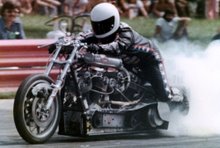
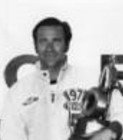
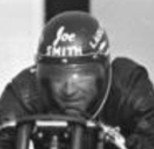

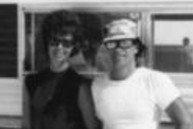
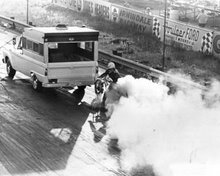
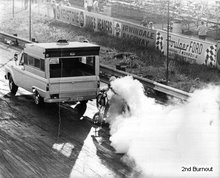
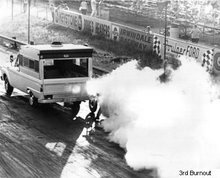
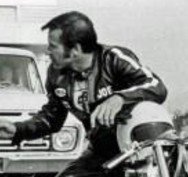
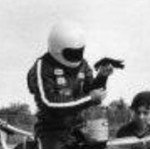
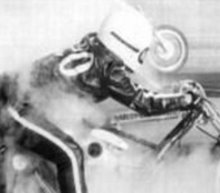
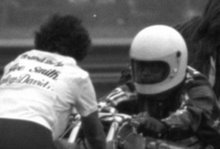
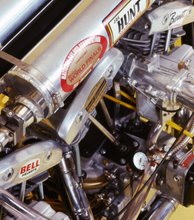
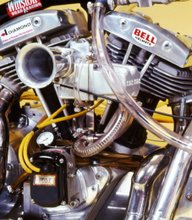
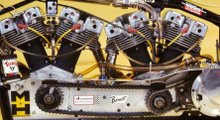

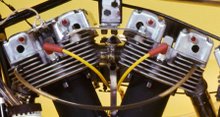
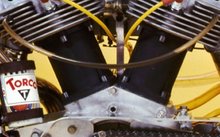
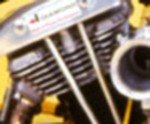

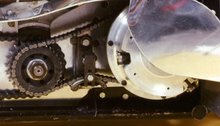
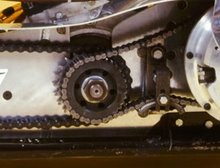

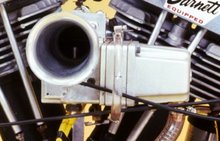
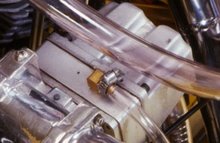
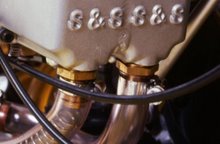
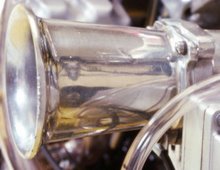
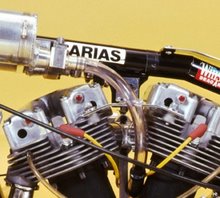
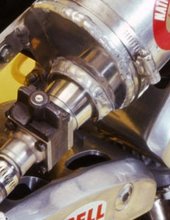

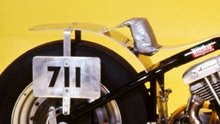
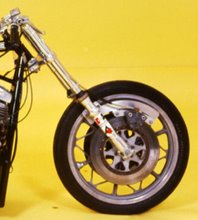
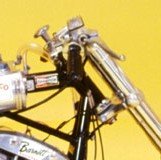
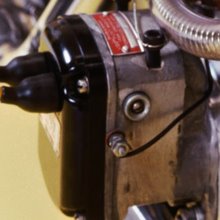
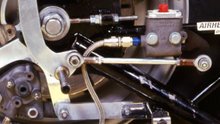
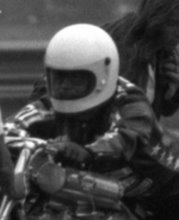
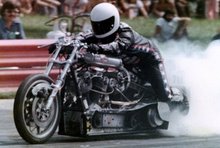

No comments:
Post a Comment